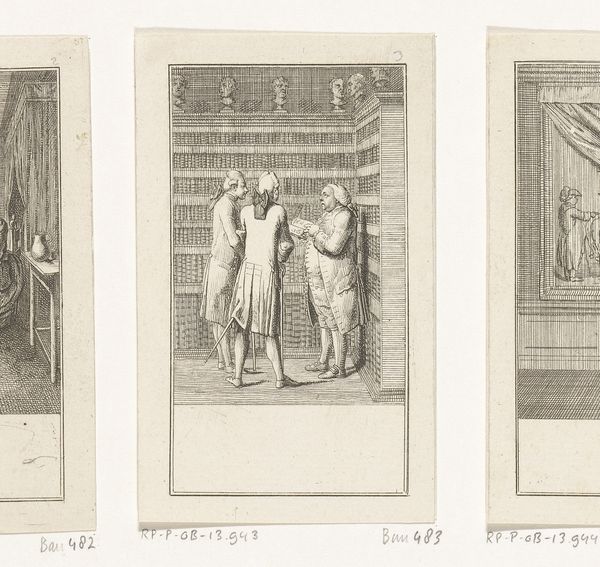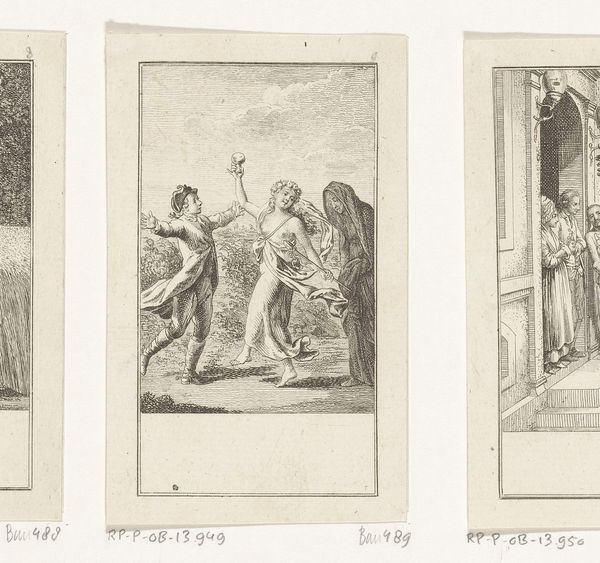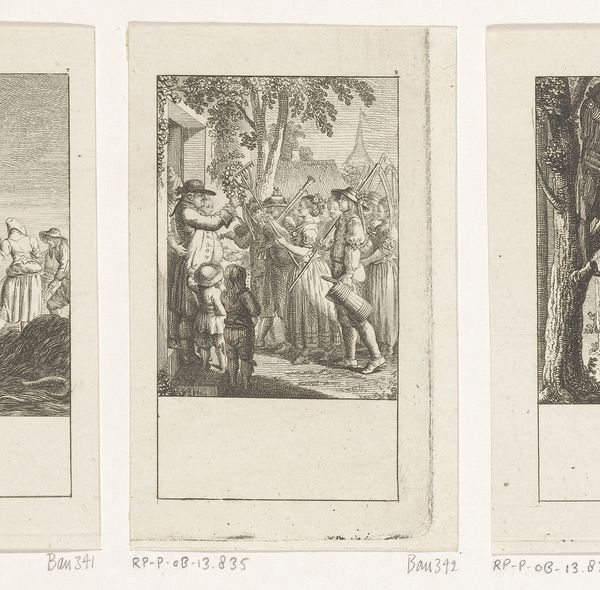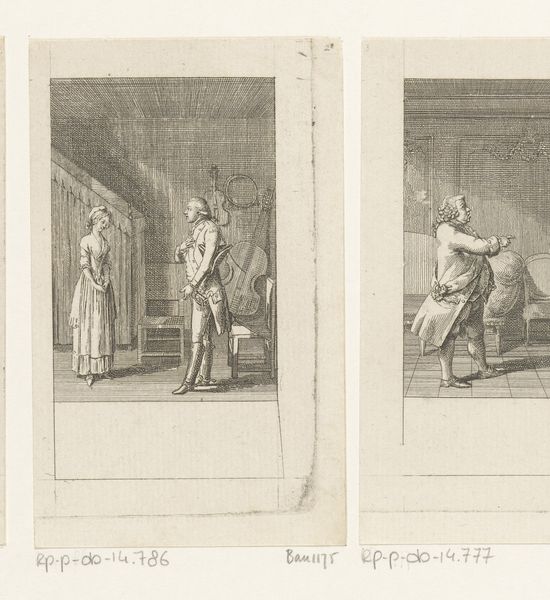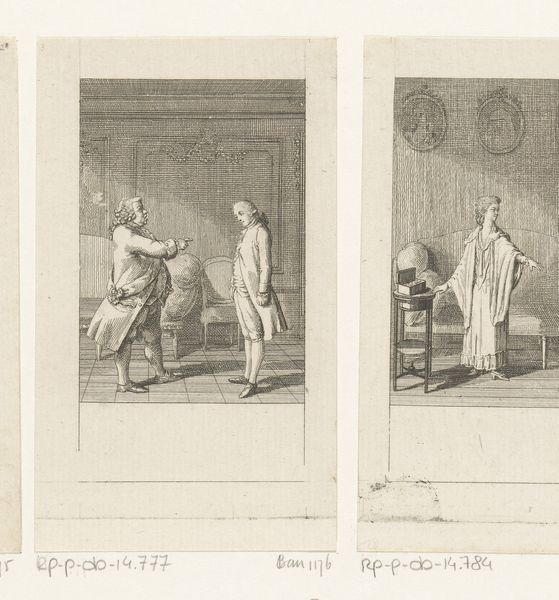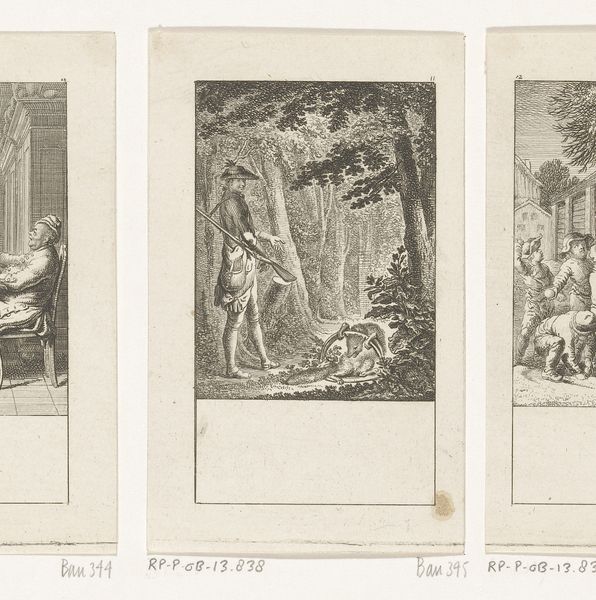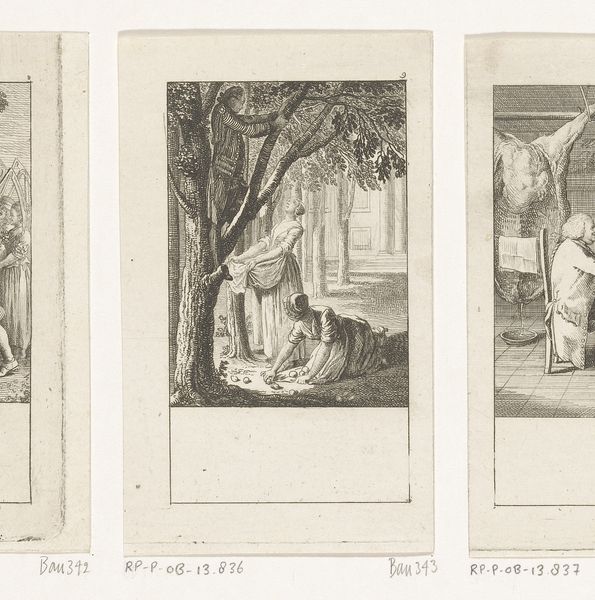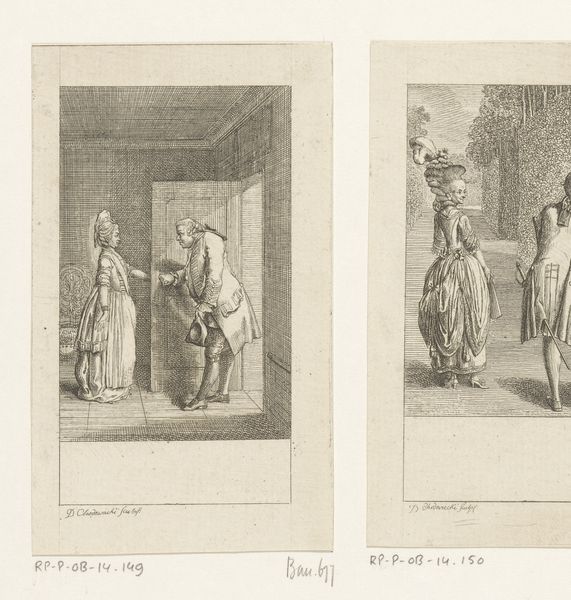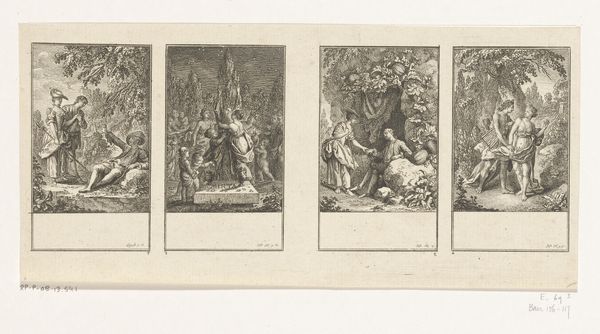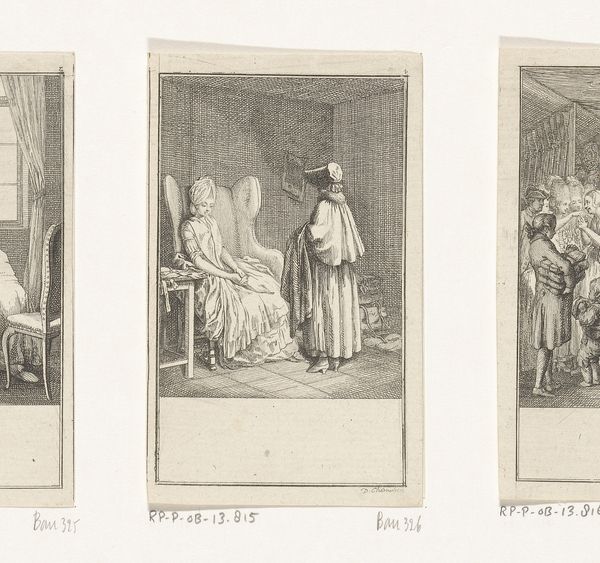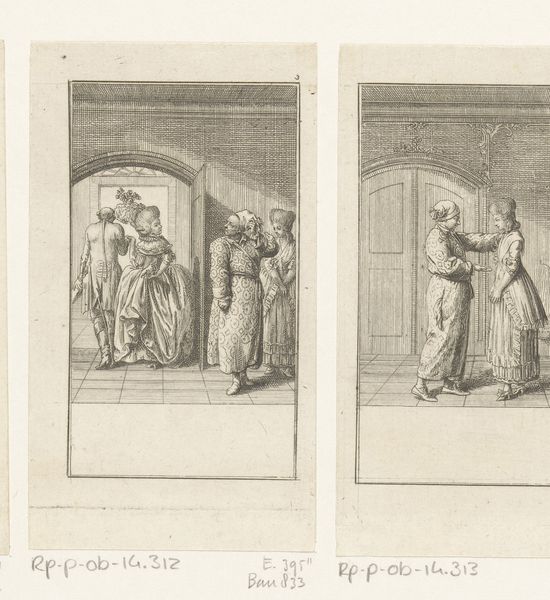
Dimensions: height 100 mm, width 62 mm
Copyright: Rijks Museum: Open Domain
Curator: This is Daniel Nikolaus Chodowiecki's "Erato onthult een schilderij," dating back to 1778. This print, employing the etching technique, resides here at the Rijksmuseum. Editor: It feels very staged. Cold, almost. A woman pulls back a curtain, revealing a historical tableau... yet there’s a distancing effect. It’s as though we’re watching a play within a play. Curator: Indeed, it is intended to be allegorical. Erato, the Greek muse of lyric poetry, unveils a history painting. Chodowiecki was deeply invested in the Enlightenment ideals circulating through intellectual circles, portraying how knowledge and art, are, literally revealed to us. Consider also the societal structures upholding this 'revelation'. Who benefits? Editor: Right. I see Erato positioned so powerfully, acting as the grand revealer of History. This raises the question of who gets to write, curate, and present history, and how the art itself reinforces or challenges that power. Curator: And the tableau that she is revealing…it suggests a classical historical scene. The work speaks to the conventions of history painting popular at the time—demonstrating virtue, heroism, often within a heavily idealized context. The printing medium itself played a huge part, making such scenes far more accessible and able to promote these ideals to a wide audience. Editor: But isn't the cool detachment potentially subversive? Almost suggesting artifice. This deliberate presentation encourages viewers to question, not simply accept, the narratives on display. I’m drawn to this push-pull tension it sets up. Curator: It's fascinating to examine through that lens. Chodowiecki operated in a time where art institutions were shaping and solidifying national identities. His allegories may subtly invite reflection on that very process of construction, even while participating in it. Editor: Seeing art is never simply an aesthetic experience. Even a piece like this is engaged in a far more charged social and intellectual discourse. Curator: Exactly. Looking closer lets us ask not just *what* we're seeing but *why* and *how*.
Comments
No comments
Be the first to comment and join the conversation on the ultimate creative platform.
